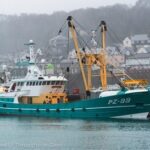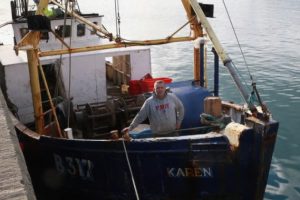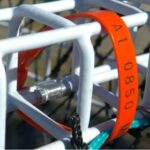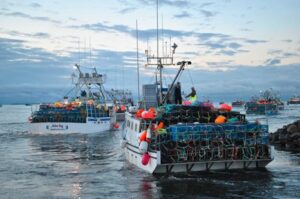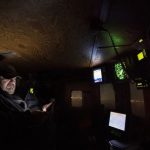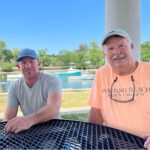Daily Archives: April 10, 2017
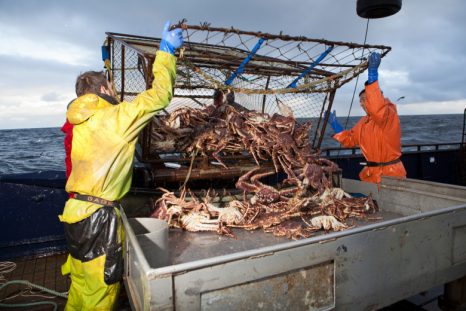
‘Deadliest Catch’ Faces Its Own Extinction – The crabs are missing in the Bering Sea, and the series may soon have nothing to film.
If Discovery’s “Deadliest Catch” is in trouble, it’s climate change – not ratings – that may hasten the show’s demise. Over the last year, temperatures rose about four degrees in the Bering Sea, which is 50 times the global average. As filming began for the 13th season of “Deadliest Catch,” which premieres Tuesday night, the show’s fishermen had to contend with a serious problem: With warming waters, the crabs have moved elsewhere. “The first thing that you need in order to film a show about crab fishing are the crabs,” said executive producer R. Decker Watson, Jr. “If the crabs don’t show up, then we’re all out of business.” The Alaska Department of Fish and Game sets an annual quota system on crab fishing, depending on a survey they take in the spring and summer. This past year, they found that half the crab was missing, and quotas were cut across the board.“We didn’t know if we were even going to be on the water long enough to film the 20 hours of ‘Deadliest Catch’ for the season,” Watson said. “It became a much more difficult fight for each skipper… It worries me for the future of the fishermen, they’re really having to fight to save their way of life. But it makes for great television.” Indeed, the fishermen’s struggle became a major part of the story this season. click here to read the story 20:03
Pacific sardine fishery closed for the third year in a row
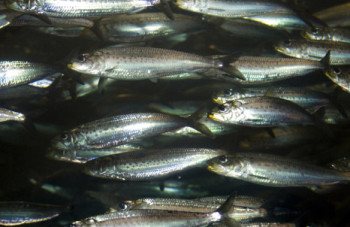 The Pacific Fishery Management Council on April 10 announced the continued closure of the Pacific sardine directed fishery through June 30, 2018. This is the third annual closure in a row for this fishery. Council members heard from scientists that the abundance forecast for the 2017-18 season, scheduled to start July 1, was significantly below the 150,000 metric ton threshold for a directed fishery. They also considered testimony from fishery participants and environmental groups before reaching a decision to close the directed fishery. click here to read the story 19:33
The Pacific Fishery Management Council on April 10 announced the continued closure of the Pacific sardine directed fishery through June 30, 2018. This is the third annual closure in a row for this fishery. Council members heard from scientists that the abundance forecast for the 2017-18 season, scheduled to start July 1, was significantly below the 150,000 metric ton threshold for a directed fishery. They also considered testimony from fishery participants and environmental groups before reaching a decision to close the directed fishery. click here to read the story 19:33
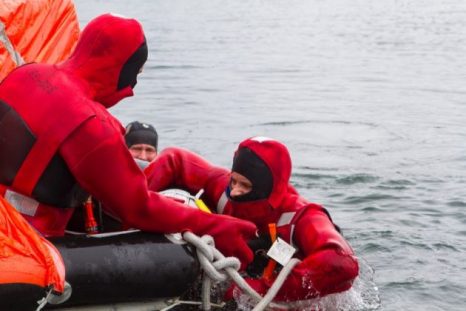
Reality check – As they gear up for the season, Island fishermen receive two days of safety and survival training.
Don’t put the injured on the raft first, they can slow down the evacuation. Don’t stow survival suits below decks. Don’t leave port without a Nerf football. This was some of the wisdom imparted to a group of 35 commercial fishermen gathered at Coast Guard Station Menemsha on a gray, windy Thursday morning, where, appropriately, a storm front was bearing down on the Vineyard. It was day one of two training days for commercial fishermen — along with sailors, harbormasters, and shellfish constables — provided by Burlington-based Fishing Partnership Support Services (FPSS). The focus of the day one was safety and survival. Participants rotated among six training modules: man overboard procedure, firefighting and flares, survival suits, helicopter hoist operations, flooding and pump operations, first aid and CPR, and life raft equipment. seven images, click here to read the story 16:19
Fundy fishermen lose bid to stop tidal turbine in Minas Basin
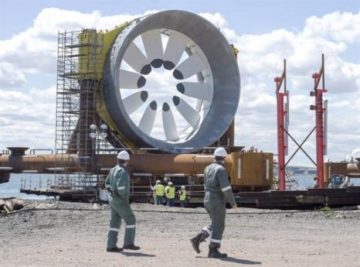 A group of Bay of Fundy fishermen have lost a bid to overturn the approval of a project in Nova Scotia’s Minas Basin. In February, the Bay of Fundy Inshore Fishermen’s Association argued in Nova Scotia Supreme Court that the province’s environment minister granted approval of the project without enough environmental data. The group, which represents 175 fishermen from Yarmouth to the New Brunswick border, says it believes the tidal energy program will harm marine life. The first turbine was deployed in November. In particular, the group has accused the operators of the turbine of failing to produce “relevant baseline data,” or a snapshot of the environmental state of the Bay of Fundy before the turbine was deployed. On Monday, Justice Heather Robertson rejected the claims by the fishermen, saying “extraordinary efforts have been made to evaluate risk” in the 2009 environmental assessment of the turbine project. click here to read the story 15:37
A group of Bay of Fundy fishermen have lost a bid to overturn the approval of a project in Nova Scotia’s Minas Basin. In February, the Bay of Fundy Inshore Fishermen’s Association argued in Nova Scotia Supreme Court that the province’s environment minister granted approval of the project without enough environmental data. The group, which represents 175 fishermen from Yarmouth to the New Brunswick border, says it believes the tidal energy program will harm marine life. The first turbine was deployed in November. In particular, the group has accused the operators of the turbine of failing to produce “relevant baseline data,” or a snapshot of the environmental state of the Bay of Fundy before the turbine was deployed. On Monday, Justice Heather Robertson rejected the claims by the fishermen, saying “extraordinary efforts have been made to evaluate risk” in the 2009 environmental assessment of the turbine project. click here to read the story 15:37
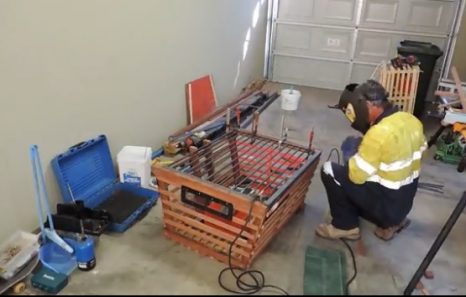
How To Build Your Own Craypot (Lobster Pot) Perth WA
DIY how to build your own craypot (lobster pot) for catching your own West Australian Rock Lobster (Crayfish) We catch them from the North side to the West end of Rotto in 30m of water in the Indian Ocean. We also catch them behind Three Mile Reef in 30m of water. We normally leave Hillarys Boat Harbour to check our pots. We sometimes put our pots behind Five Fathom Bank in 30m of water. We normally use tuna heads, mackerel, sanmar and mullet for our bait for our craypots. They have an interesting way to retrieve them too! Watch the video here 14:54
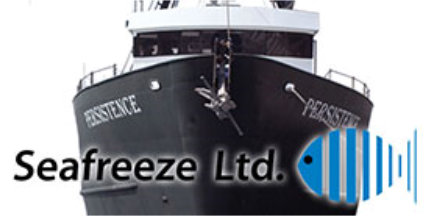
Always Top Quality! Your Seafreeze Ltd. Preferred Price List for April 2017 Has Arrived!
Contact our sales team today @ 401 295 2585 or 800 732 273 Click here for the complete price list from Seafreeze Ltd. – We are Direct to the Source-We are Fishermen-We are Seafreeze Ltd! Visit our website! 12:54
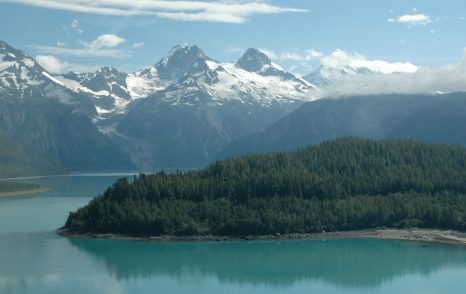
Where Is America’s Next War? Alaska. And the enemy is not who you’d expect.
It’s war in the Gulf and the US Navy is on hand to protect us. No, not that Gulf! I’m talking about the Gulf of Alaska and it’s actually mock war — if, that is, you don’t happen to be a fin whale or a wild salmon. This May, the Navy will again sail its warships into the Gulf of Alaska. There, they will engage in military maneuvers and possibly drop bombs, launch torpedoes and missiles, and engage in activities that stand a significant chance of poisoning those once-pristine waters, while it prepares for future battles elsewhere on the planet. Think of it as a war against wildlife, an assault on the environment and local coastal communities. click here to continue reading the article 11:57
Mid-Atlantic Fishery Management Council Meeting in Avalon, New Jersey: April 11-13, 2017
The public is invited to attend the Mid-Atlantic Fishery Management Council’s April 2017 meeting to be held April 11-13, 2017 in Avalon, New Jersey. The meeting will be held at the Icona Golden Inn, 7849 Dune Dr., Avalon, NJ, Telephone 609-368-5155. Briefing documents will be posted as they become available (click here). For online access to the meeting, enter as a guest (click here) This link is now active! 09:56
Being Pushed Out: Offshore wind farms add to woes of Dutch fishing fleet
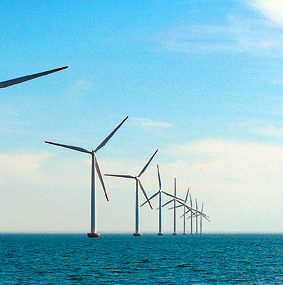 Plans to extend the number Dutch offshore wind farms are adding to the problems faced by the Dutch North Sea fishing fleet, said the Financieele Dagblad on Monday. Proposals presented last Friday call for offshore wind farm capacity of 4,450 megawatts to be added until 2031, with capacity hiked to 10,000 megawatts by 2030. The wind farms would cover several thousand square kilometres in the North Sea. But with the major shipping lanes, large nature reserves, sand-mining areas and other areas off limits to the fisheries industry, Dutch fishing waters are being compromised. And with Brexit, British fishing grounds may be closed to Dutch fishing vessels, further adding to the problems, the paper said. link 08:41
Plans to extend the number Dutch offshore wind farms are adding to the problems faced by the Dutch North Sea fishing fleet, said the Financieele Dagblad on Monday. Proposals presented last Friday call for offshore wind farm capacity of 4,450 megawatts to be added until 2031, with capacity hiked to 10,000 megawatts by 2030. The wind farms would cover several thousand square kilometres in the North Sea. But with the major shipping lanes, large nature reserves, sand-mining areas and other areas off limits to the fisheries industry, Dutch fishing waters are being compromised. And with Brexit, British fishing grounds may be closed to Dutch fishing vessels, further adding to the problems, the paper said. link 08:41
A Message from John Bullard – Looking Forward to Looking Back: Electronic Monitoring in New England Groundfish
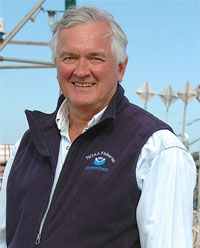 Electronic monitoring (EM) is being used for catch monitoring and reporting compliance in fisheries worldwide, but use in the Northeast has been somewhat limited. There are always challenges with ensuring the accuracy of self-reported fisheries catch data, but EM represents a new suite of tools to improve reporting accuracy and increase catch monitoring. If we want to provide scientists with the best information possible and manage our fisheries sustainably, then we need to consider all of the tools in the toolbox. click here to read the story 07:27 (The tool box is full of monkey wrenches and ball peen hammers)
Electronic monitoring (EM) is being used for catch monitoring and reporting compliance in fisheries worldwide, but use in the Northeast has been somewhat limited. There are always challenges with ensuring the accuracy of self-reported fisheries catch data, but EM represents a new suite of tools to improve reporting accuracy and increase catch monitoring. If we want to provide scientists with the best information possible and manage our fisheries sustainably, then we need to consider all of the tools in the toolbox. click here to read the story 07:27 (The tool box is full of monkey wrenches and ball peen hammers)
NJ asks feds to drop limits on summer flounder
 With their rows of sharp buck teeth, their downturned mouths, and both eyes on one side of their curiously flat bodies, summer flounder might seem beautiful only to one another. But this delicately flavored flatfish is the pinup girl, the heart’s desire, of thousands of New Jersey’s recreational fishermen — and has long been the source of many millions of dollars in tourism revenue each summer. For that reason the state has petitioned a federal commission to reverse its new restrictions on catching summer flounder in state waters in 2017. click to continue reading the story 07:06
With their rows of sharp buck teeth, their downturned mouths, and both eyes on one side of their curiously flat bodies, summer flounder might seem beautiful only to one another. But this delicately flavored flatfish is the pinup girl, the heart’s desire, of thousands of New Jersey’s recreational fishermen — and has long been the source of many millions of dollars in tourism revenue each summer. For that reason the state has petitioned a federal commission to reverse its new restrictions on catching summer flounder in state waters in 2017. click to continue reading the story 07:06


































